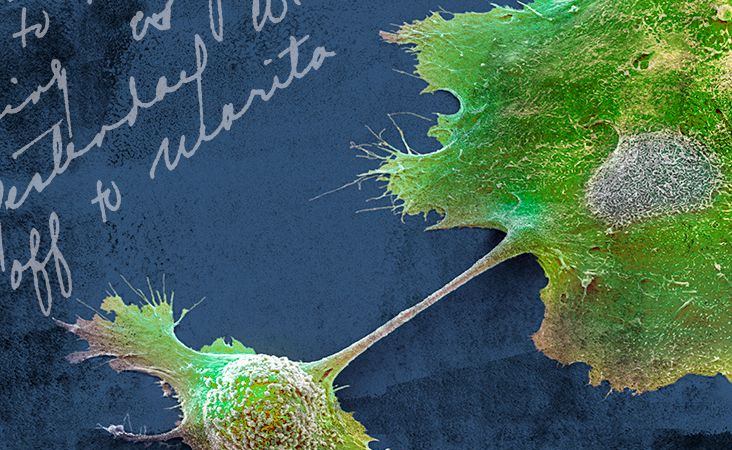
Cancer causes cells to divide uncontrollably. This can result in tumors, damage to the immune system, and other impairment that can be fatal.
Cancer can affect various parts of the body, such as the breasts, lungs, prostate, and skin.
In this article, we examine types of cancer, how the disease develops, and how doctors may treat it. We also explore different types of cancer and disease outlook. Finally, we answer some common questions about cancer.
To discover more evidence-based information and resources for cancer, visit our dedicated hub.
Cancer is a broad term. It
Some types of cancer cause rapid cell growth, while others cause cells to grow and divide at a slower rate.
Certain forms of cancer result in visible growths called tumors, while others, such as leukemia, do not.
Most of the body’s cells have specific functions and fixed lifespans. Cell death is part of a natural and beneficial phenomenon, which healthcare professionals call apoptosis.
A cell receives instructions to die so that the body can replace it with a newer cell that functions better. Cancerous cells lack the components that instruct them to stop dividing and to die.
As a result, they build up in the body, using oxygen and nutrients that would usually nourish other cells. Cancerous cells can form tumors, impair the immune system and cause other changes that prevent the body from functioning regularly.
Cancerous cells
There are many causes of cancer, and some are preventable.
Preventable risk factors for cancer
Other risk factors for cancer are not preventable. Currently, the most significant unpreventable risk factor is age. According to the American Cancer Society (ACS), doctors in the United States diagnose
Genetic factors can contribute to the development of cancer.
A person’s genetic code tells their cells when to divide and expire. Changes in the genes can lead to faulty instructions, and cancer can result.
Genes also influence the cells’ production of proteins, and proteins carry many of the instructions for cellular growth and division.
Some genes change proteins that would usually repair damaged cells. This
Some genetic mutations that increase the risk of developing cancer occur after birth. Healthcare professionals refer to these changes as “acquired gene mutations”. Possible causes include smoking and sun exposure. These genetic changes cause cancer more commonly than inherited gene mutations.
Other changes that can result in cancer take place in the chemical signals that determine how the cells turn specific genes on and off. Doctors may call these “epigenetic changes”.
Doctors usually prescribe treatments based on the type of cancer, its stage at diagnosis, and the person’s overall health.
Some examples of cancer treatment
Doctors will often employ more than one type of treatment to maximize effectiveness.
The
Each year, more than 40,000 people in the country receive a diagnosis of one of the following types of cancer:
Other forms are less common. According to the National Cancer Institute, there are
Doctors classify cancer by its location in the body and the tissues that it forms in.
For example, sarcomas develop in bones or soft tissues, while carcinomas form in cells that cover internal or external surfaces in the body. Basal cell carcinomas develop in the skin, while adenocarcinomas can form in the glands.
When cancerous cells spread to other parts of the body, the medical term for this is metastasis.
A person can also have more than one type of cancer at a time.
Improvements in cancer detection, increased awareness of the risks of smoking, and a drop in tobacco use have all contributed to a year-on-year decrease in the number of cancer diagnoses and deaths.
According to the ACS, the overall cancer death rate declined by
When a person has cancer, their outlook will depend on whether the disease has spread and on its type, severity, and location.
Below are some common questions and answers about cancer.
Some cancers cause early symptoms, but others do not exhibit symptoms until they are more advanced. Many of these symptoms are often from causes
The best way to identify cancer early is to report any unusual, persistent symptoms to a doctor so they can offer advice about any further testing that may be needed.
Each individual’s outlook
However, the ACS indicates that the overall cancer death rate has declined by
Some types of cancer do not cause symptoms in the early stages. Therefore, a person may not know they are living with the disease until it reaches more advanced stages.
For example, research indicates that carcinoid tumors may not present with any symptoms for
Cancer causes cells to divide uncontrollably. It also prevents them from dying at the natural point in their life cycle.
Genetic factors and lifestyle choices, such as smoking, can contribute to the development of the disease. Several elements affect the ways that DNA communicates with cells and directs their division and death.
After nonmelanoma skin cancer, breast cancer is the most common type in the U.S.
Treatments are constantly improving. Examples of current methods include chemotherapy, radiation therapy, and surgery. Some people benefit from newer options, such as stem cell transplantation and precision medicine.
The diagnosis and death rates of cancer are dropping yearly.
Last medically reviewed on January 24, 2024
Share this article
OUR BRANDS







